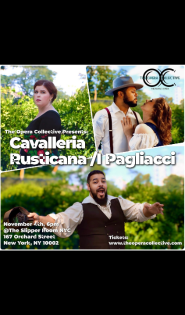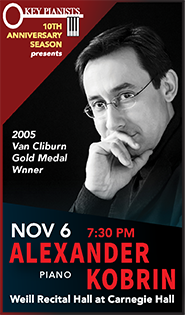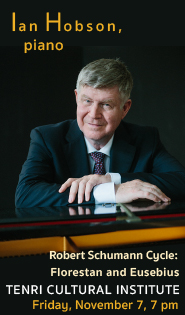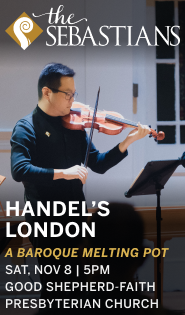Dinnerstein brings a personal touch to Glass concerto premiere

Simone Dinnerstein performed Philip Glass’s Piano Concerto No. 3 Thursday night at Miller Theatre. Photo: Lisa-Marie Mazzucco
Miller Theatre has an ongoing concert series dating back years that pairs Bach with contemporary composers. The latest entry leading off Miller’s season Thursday night offered Bach with Philip Glass, played by the Boston-based, conductor-free chamber string orchestra, A Far Cry, and pianist Simone Dinnerstein.
These concerts make no particular argument because there is none to make. Bach is the Isaac Newton of music; everything that comes after him is built, in one way or another, on his foundation. Advancements in musical thinking have done nothing to dislodge him, just as Newton’s laws still describe our everyday experience of the universe.
And so the compositions, Brandenburg Concerto No. 3 and the G minor Keyboard Concerto, BWV 1058, and Glass’s Symphony No. 3 and the New York premiere of his Piano Concerto No. 3 (these musicians gave the world premiere last week in Boston) made for a seamless and rich aesthetic blend.
The concert did reinforce what is obvious yet overlooked in both the mainstream classical and new music scenes: Classical music is (again, like physics) an accumulation of knowledge about how music can be organized and made. The present and past are in constant conversation precisely because the present is built on the past. If we see far, it is because we stand on the shoulders of giants.
The Bach performances were unremarkable, treading a pleasantly bland middle ground between an exacting look at the music’s structure and an exaltation of the passions hidden just beneath the surface. Both of his concertos moved forward smoothly but without utilizing the rhythmic resources built into the music; the Brandenburg could have used sharper accents, and syncopations begged to be a bit jauntier.
Conversely, A Far Cry and Dinnerstein hinted at an interest in the harmonies and especially the homophonic parts of the Keyboard Concerto, but never defined a specific idea. The dark sound of Dinnerstein’s own past playing and recording can be a fascinating path into Bach, but Thursday she neither sufficiently sustained phrasing all the way through a line, nor gave enough time to lingering on the possible beauties in each note and chord.
Glass’s music, however, came off as indeed farsighted. Originally a pure modern contrapuntalist, he has come to resemble Bruckner, himself a master of counterpoint. Glass’s symphonies—there are now 11—have been the primary means for him to try out new uses for vertical harmony and an increasingly expansive expressive language.
Symphony No. 3 for string orchestra is one of his most well-known and popular symphonies, and an important signpost along the path of his late style. The chugging rhythms and the reworking of elements of Glassworks are there; so is a more extended use of harmonies and lyrical polyphony.
A Far Cry sounded more involved and sympathetic in this piece than in Bach. The internal energy of the music gradually rose up and through its placid surface, and the criss-crossing violin melodies in Movement III were impassioned.
The new concerto is close in form and style to the current symphonies, especially the excellent No. 11 which premiered earlier this year. In concept, the concerto is a companion to the Concerto for Two Pianos, heard from the New York Philharmonic last week, and likewise an embodiment of Glass’s stated interest in putting the piano into conversation rather than opposition with the orchestra.
In method, the piece was full of new ideas. There were the familiar rocking tremolos and repeated cadences, but there was also music that had an atypical sense of uncertainty — chord changes and harmonic rhythms that not only moved in surprising directions but that drifted off without coming to the resolute orderliness that marks Glass. Many of the cadences were new in his work as well, his insistent language using a new vocabulary.
There are four cadenzas interspersed among the three movements, and while they don’t share the heroic profiles of the common concerto, they did display Dinnerstein’s artistry. Glass wrote this work specifically for her, after hearing her play his work and Schubert in his home, and his own thinking and playing were clearly in deep sympathy with each other.
The cadenzas are beautiful, expressive music inside a concerto that itself is beautiful and dramatically expressive, the shape pointing toward heightened moments of realization and resolution. In the performance, the feeling was romantic in the way of revealing personal truths, and Dinnerstein sounded deeply touched by the music flowing through her hands. This was a marvelous performance of a marvelous new work.
Harpsichordist Mahan Esfahani plays the Goldberg Variations 8 p.m., October 28; Simone Dinnerstein and other pianists play Bach concertos, 8 p.m., December 7 millertheatre.org






